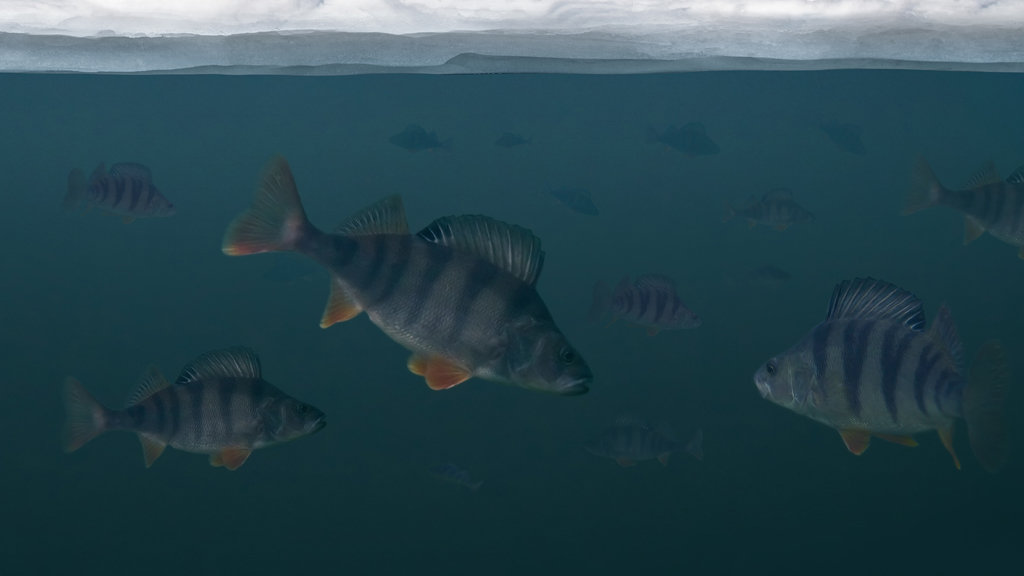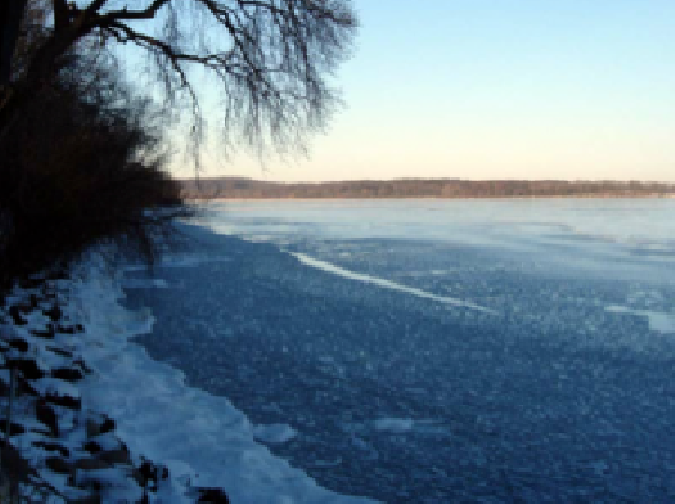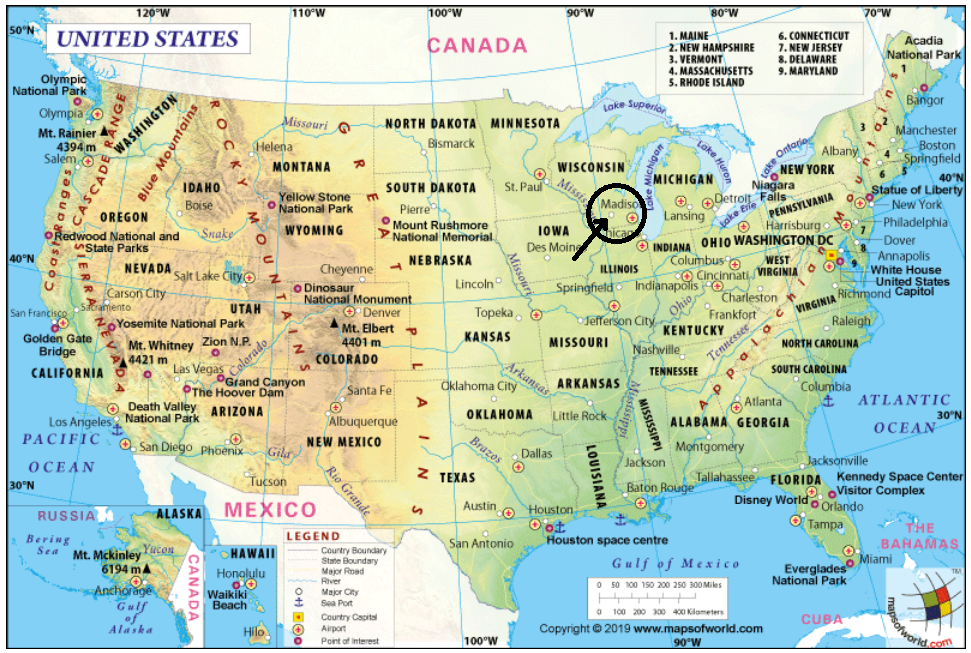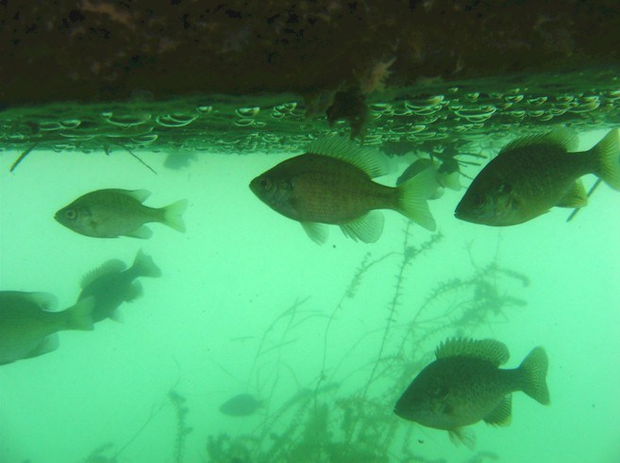Middle School | Daily Do
How can fish survive in a frozen lake?

Biology Crosscutting Concepts Disciplinary Core Ideas Is Lesson Plan Life Science NGSS Phenomena Science and Engineering Practices Three-Dimensional Learning Middle School Grades 6-8
Sensemaking Checklist




Introduction
With temperatures soaring into the upper 90's (Fahrenheit), figuring out how fish survive in a frozen lake may be just the think needed to keep cool!
In today's task, How do fish survive in a frozen lake?, students experience the phenomenon of ice fishing through a series of photographs. They then engage in science and engineering practices and use the thinking tool of patterns and the flow of matter and energy to begin to make sense of science ideas about the cycling of matter in an ecosystem - both open and closed versions of the same system.

Tell students you have a puzzling phenomenon you'd like to share! Ask students to create a space in their science notebooks, on a sheet of paper, or document to record observations and questions. Then share the images (above) of a frozen lake and people fishing in it.
Give students an opportunity to share their observations with a partner, and then ask them to share an observation (either their own their partner's) with the class. Observations might include:
- There's ice on the lake
- The ice covers the whole lake (can see ice on the shore)
- The ice is clear (and/or bumpy)
- Some spots are covered with snow
- There are (living) fish (swimming) in the lake
- The ice isn't very thick
Ask students to save their questions; you will ask for them later. You might ask students if they have experienced, observed or heard about something like fish living below a frozen lake before. Let students share their ideas with a partner or small group. You might hear students share ideas about terrariums, aquariums, animals that change their behaviors in winter, etc.
Tell students the pictures were taken over the winter months on Lake Mendota, located in Madison, Wisconsin. Share the view of the lake from the webcam and show the location on a map (below).

Next, tell students you have some data for Lake Mendota and two species of fish that live there, Bluegill and Northern Pike. Share the Fish in Lake Mendota data sheet with students. Working in pairs, ask students to make and record observations and any new questions that come up. Do they notice any patterns in the data represented in the data tables or information cards?
Ask the pairs of students to form small groups and share their observations. Then, ask students to share observations with the class. Make sure to record their observations, adding to list of student observations of the ice fishing photos. Observations may include:
- the fish weigh less in winter than summer
- different parts of the lake have different temperatures in summer but the lake is mostly the same temperature in winter
- there is less oxygen in the lake in winter than summer
- Northern Pike eat other fish
- Northern Pike and Bluegill have to move (swim) to breathe
Say to students, "We know that fish live in the lake during the winter, but how do you think they survive below the frozen lake surface?" Ask students to independently create a model to explain how fish survive below the frozen lake surface all winter. You might ask students to divide their paper (or document) in two and label one side Lake Surface NOT Frozen and the other side Lake Surface Frozen. Give students 7-10 minutes to create their model.
Move students back into small groups. Ask students to share their models with the group; students should record similarities and differences between their group members' models and their own. Next, ask each group to create a consensus model. As you move around the room, you might ask the groups some of the following questions:
If the group is having a difficult time getting started:
- What are the components (part) of the model?
- How are the components interacting? How might you represent the interaction?
- Besides the formation of a layer of ice in winter, what other changes between summer (no ice) and winter (layer of ice) need to be represented or explained by your model?
If the group is not representing the cycling of matter in their model:
- How is matter cycling in this lake ecosystem? How might you represent this transfer of matter?
- Is matter entering or leaving this lake ecosystem? How are you representing these inputs/outputs on your model?
- I see you noted the lake has more oxygen when the surface isn't frozen than it does when covered by a layer of ice. How can you explain this difference using pictures and symbols? With text?
- I see you are representing the Bluegill and Northern Pike as heavier in the summer model and lighter in the winter model. How can you explain this difference using pictures and symbols? Text?
When groups have completed their consensus models, ask them to post their models around the room (or virtual room). Then, ask each group to make observations of at least three other group models. Students should note at least one thing they like about the model they are observing (a component is represented the visiting group did not include; an interaction is represented the visiting group did not include or the visiting group likes the way the interaction is represented; etc.) and pose one question for the group.
After giving student groups the opportunity to return to their own model and reflect on the "likes" and questions posted by other groups, allow them time to add to or change their model.
Ask students, "Do you notice any patterns in the questions posed to the groups? That is, are there parts of the model where we notice the most differences between the group models?" Note: Be clear you are speaking about differences in ideas represented, not differences in the way the same ideas are represented. Ask students to go back and read questions posted on all the group models and note which part(s) of the model these questions target.
In small groups, ask students to identify the parts of the model where they noticed the most differences between the group models. Ask each group to share one pattern (specific part of the model where the group models differed) they noticed. Make sure to record the patterns publicly. Label this class list Differences Between Group Models.
Ask students to create a two-column table. Label the left column Differences Between Group Models and the right side Questions and Possible Investigations. Tell students to list the patterns the class noticed in the left column. Share with students that you'd like them to write questions that could be investigated to support figuring out the part of the model identified in the left column. It is OK if students are not able to individually identify questions and possible investigations for all of the differences between group models they list in left column.
Next, ask students to share their tables with their group members. Task the groups to come to consensus on the questions they want to answer and how they would investigate. As you move around the room, ask the groups what data they would collect and why (how would this data help them figure out the part of the model they identified).
Use these questions to navigate to the next investigation.
Students may ask questions about how lakes freeze (Does ice always form on top of the lake first? Could the lake freeze "all the way" over the winter?). You could use these questions to navigate to the Daily Do How do lakes freeze?
Students will also likely ask questions about fish living in a closed system. You might use questions around a closed (eco)system to navigate to the How do shrimp live in a closed system? Daily Do.
At the end of any subsequent investigation, make sure to return to students' questions and determine if all or part of any question(s) has been answered. Allow students to add any new questions they have about how fish survive in a frozen lake.



